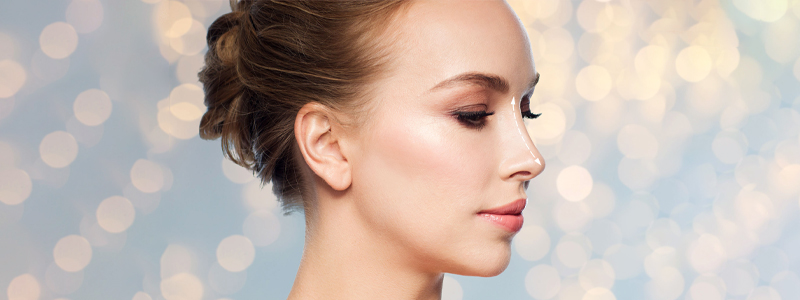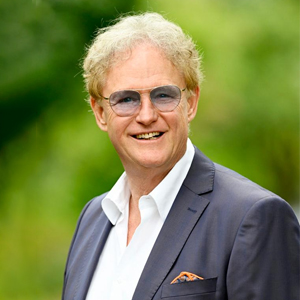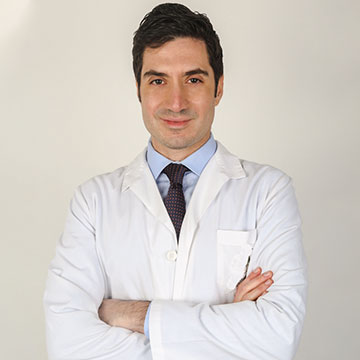Rhinoplasty, or nose job, is a surgical procedure to change the shape or structure of the nose. It is either provided to improve the nose’s aesthetics or correct structural problems, mainly the ones that cause nasal breathing difficulties. This surgery involves tissue modification in the nose’s skin, cartilage, bone, or all three, depending on the treatment goals or the degree of correction required.
Benefits of Rhinoplasty
Rhinoplasty offers several benefits, some of which are as follows:
- Improved appearance
- Improved nasal breathing
- Effective restoration of a broken nose
- Reduced sinus problems
- Reduced snoring
Who Is The Ideal Candidate For Rhinoplasty?
To be a good candidate for rhinoplasty surgery, make sure that:
- You are overall healthy and fit to undergo rhinoplasty.
- Your facial growth is complete at the time you want to have a nose job.
- You are a non-smoker or at least willing to stop smoking for a prescribed duration before and after the procedure.
- Your expectations about the procedure are realistic.
Types of Rhinoplasty
Rhinoplasty is broadly classified into the following types:
- Primary rhinoplasty: Nose job surgery that a patient undergoes for the first time is called primary rhinoplasty. It is the most common type of rhinoplasty, typically performed to improve the nose’s appearance, address structural problems, or improve airflow.
- Revision rhinoplasty: This type of rhinoplasty is performed on patients who had undergone one or multiple rhinoplasties in the past but couldn’t get the desired results or their treatment had failed. This nose job is usually more challenging than primary rhinoplasty.
- Closed rhinoplasty: This nose reshaping surgery is typically used to address the aesthetic issues of the nose. It involves incisions inside the nostrils, allowing the surgeon to access and modify nasal structures without making incisions on the nose’s outer skin. Through this procedure, your surgeon may shorten your nose or reduce the bump on the bridge of your nose.
- Open rhinoplasty: This rhinoplasty can address both the cosmetic and functional problems of the nose. Its procedure involves an incision on the columella to expose the nasal structure. It is usually a more complicated treatment than closed rhinoplasty because it deals with more complex areas of the nose anatomy.
Preparing for Rhinoplasty
Rhinoplasty pre-op guidelines can be specific to your treatment requirements. However, top rhinoplasty surgeons in Dubai agree that some standard guidelines must be followed to minimize treatment risks and prevent complications. Those guidelines are as follows:
- Pay attention to your diet and lifestyle. Eat foods that have a positive impact on your digestive health. Engage in daily exercise to keep yourself physically fit.
- Plan your transportation. You may not be able to drive back home after your rhinoplasty. Therefore, asking someone from your family or friends’ circle for assistance is a good idea.
- Buy cold compresses ahead of time. With ice packs and sleep aids ready at home, it will be easy to manage pain once you return after rhinoplasty.
- Avoid using certain medications for two weeks before surgery. Generally, you will be advised to stop taking NSAIDs, aspirin, vitamin E, and herbal supplements.
- Stop smoking for at least two weeks before the treatment. Smoking can slow or compromise recovery from cell breakdown in the body. This affects wound healing, potentially causing problems during the recovery after rhinoplasty.
What Are The Steps Of A Rhinoplasty Procedure?
A rhinoplasty procedure may involve the following steps:
- The surgeon will administer local anesthesia with sedation or general anesthesia to keep you comfortable during the procedure.
- When the anesthesia comes into effect, the surgeon will make an incision inside the nostrils (closed rhinoplasty) or along the columella (open rhinoplasty). Through this incision, they will slightly raise the nasal skin to access and reshape the target nasal structures.
- In the next step, they will remove the excess bone or cartilage if the nose is oversized or bulbous. In case the nose is small enough to require augmentation, they will add cartilage grafts. These grafts are usually taken from the nose septum, ear, or rib cartilage.
- The surgeon may also straighten the projections inside the nose if you have a deviated septum. This helps improve breathing through the nose.
- The surgeon will close the incisions once the nose is sculpted according to the requirements.
Recovery
You will have swelling in the nose that usually persists for 4-6 weeks. It subsides slowly and may take a few months to go away completely. Full recovery usually takes place in 6 – 12 months.
Post-Op Care
Following the post-op guidelines will ensure a smoother recovery and help you get the desired results. Some of those guidelines are as follows:
- Sleep with your head elevated during the first few days when swelling and bleeding are prevalent.
- Avoid strenuous physical activity until the swelling is significantly reduced.
- Bathe instead of taking a shower until the bandages are taken off.
- Avoid blowing your nose.
- Follow measures to avoid constipation. This is because constipation can make you push harder to empty your bowels, putting undue pressure on your face and nose.
- Follow specific guidelines from your surgeon diligently to avoid any trouble.
What Are The Risks Of Rhinoplasty?
The most common risks associated with rhinoplasty are bleeding, swelling, and discomfort, which subside after some time. Swelling will likely cause an obstructed airway. But you should be able to breathe normally through your nose when swelling is reduced. In rare cases, you may experience an adverse reaction to anesthesia.
Remember, the post-op risk will be minimal if you get rhinoplasty from a skilled surgeon.
How Old You Have To Be To Get A Nose Job In Dubai?
You have to be 15 years or older to qualify for a nose job. This is because the cartilage and bone of the nose usually stop growing at this age. Therefore, any modifications made in the nose structure at this point tend to be permanent.
How much does rhinoplasty cost in Dubai?
The starting cost of rhinoplasty in Dubai averages around AED 25000. The exact price of the treatment may vary from case to case, depending on the following factors:
- Type of rhinoplasty recommended
- The degree of correction required and whether the correction is needed to improve the aesthetics only or address the functional problems as well
- The ENT surgeon’s expertise
- The clinic’s geographic location and reputation
Our Surgeons
Book a Consultation
Dubai Cosmetic Surgery Clinic is where you meet board-certified, highly skilled surgeons for your aesthetic and reconstructive needs. For more details, please call +971 4 348 5575. To book a consultation online, fill in the form below.
Fill in the form to get a consultation
100% Financing with 0% Interest



